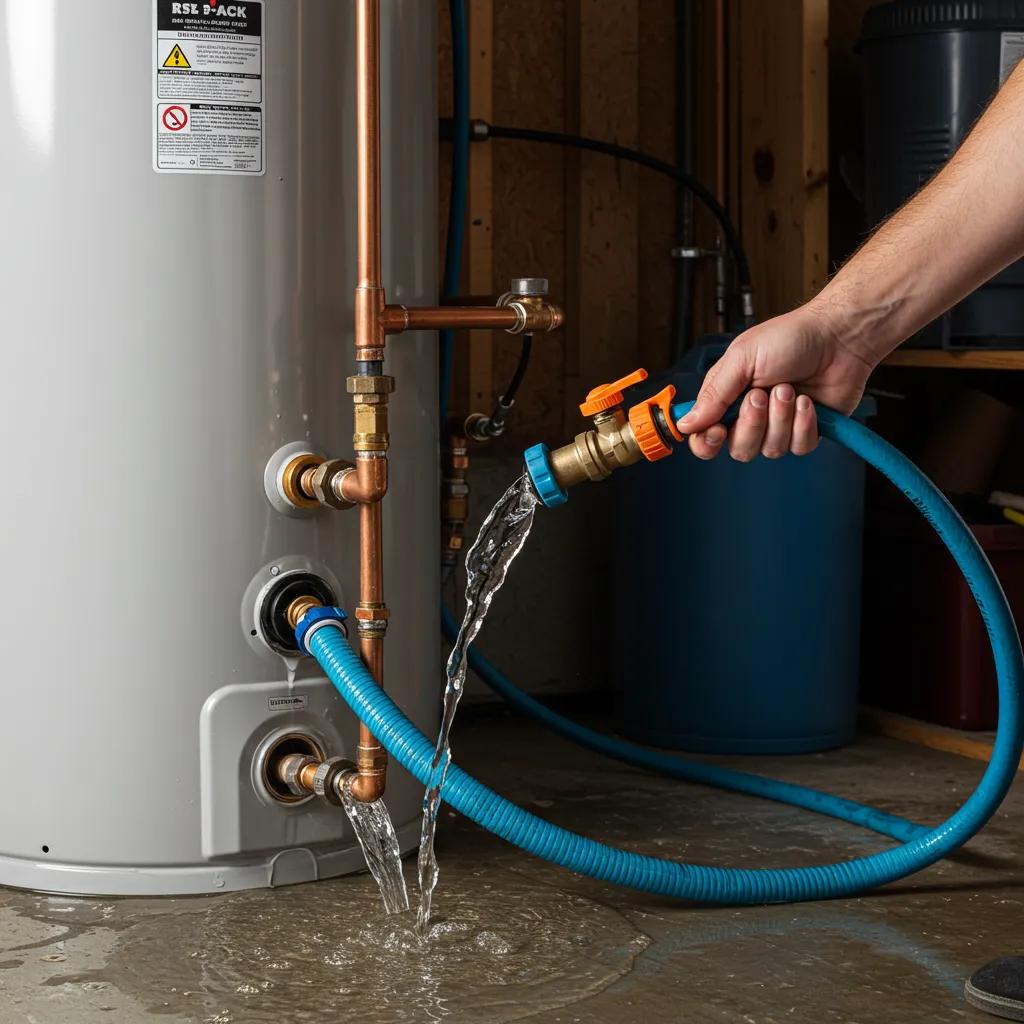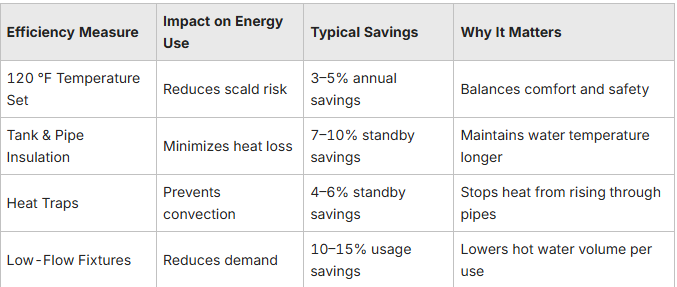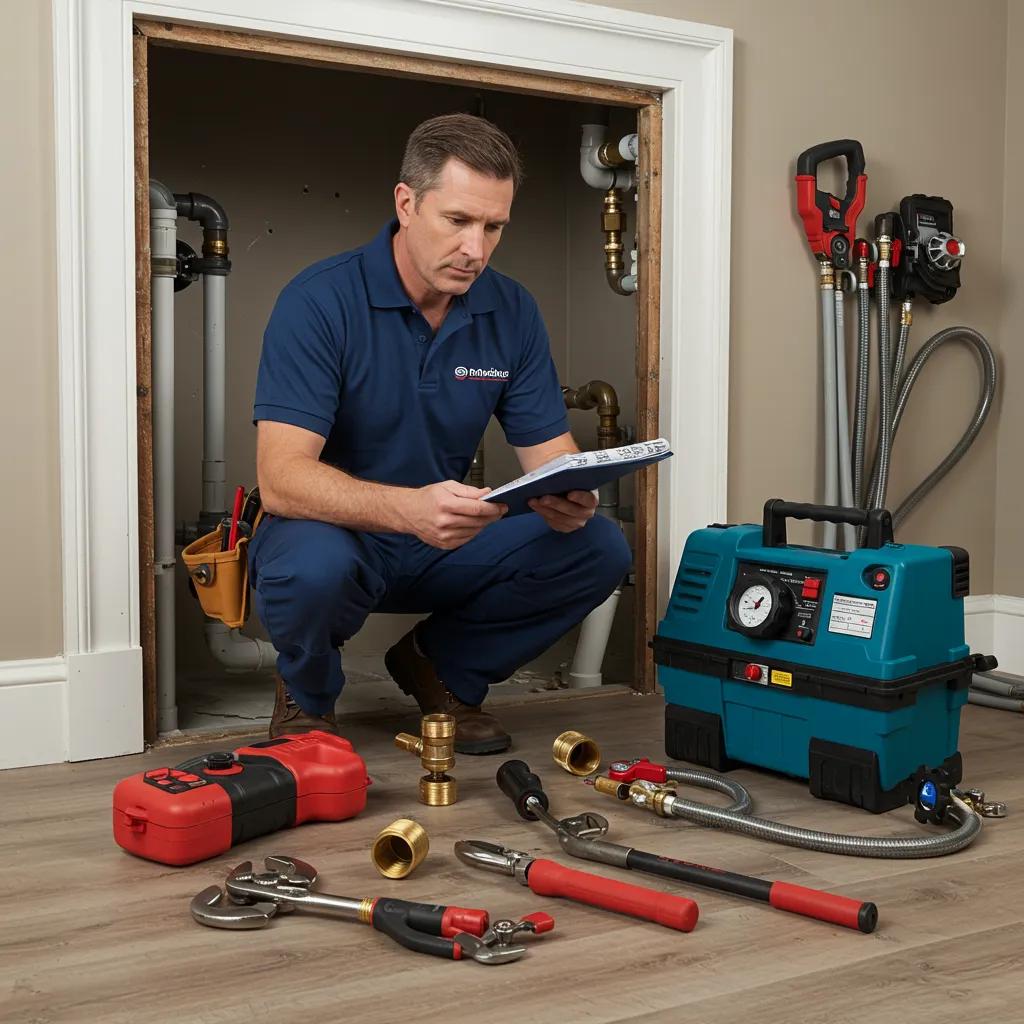Water Heater Maintenance Tips for Optimal Performance in Erie, PA

Proper water heater maintenance ensures reliable hot water, energy savings, and a longer service life for homeowners and businesses in Erie, PA. Regular upkeep addresses sediment buildup, corrosion risk, and safety valve function so your system runs efficiently year-round. In this guide, you’ll discover why routine care matters, how to flush sediment, recognize repair signs, replace sacrificial anode rods, boost energy efficiency, handle tankless descaling, and review common maintenance concerns. Along the way, you’ll learn when it’s time to schedule professional service with C. Carlin Plumbing—licensed, insured, and backed by 150 years of combined technician expertise—so you can protect your investment and enjoy consistent hot water performance.
Why Is Regular Water Heater Maintenance Essential?
Routine water heater maintenance comprises inspections, flushing, and safety checks to prevent inefficiency and premature failure. Performing these tasks removes mineral deposits, verifies relief-valve operation, and uncovers potential leaks before they escalate. For example, annual flushing can restore up to 30 percent of lost efficiency in systems burdened by hard water sediment. Understanding these benefits creates a foundation for efficient hot water delivery and cost savings on energy bills.
Key benefits of scheduled maintenance include:
- Improved energy efficiency through sediment removal and thermostat calibration
- Extended equipment lifespan by preventing corrosion and overheating
- Enhanced safety via T&P relief-valve testing and leak detection
Maintaining your water heater consistently lays the groundwork for trouble-free operation and leads naturally into the specific efficiency and safety advantages that follow.
How Does Maintenance Improve Water Heater Efficiency and Longevity?
Regular maintenance improves water heater efficiency by removing sediment that insulates heating surfaces and forces burners or elements to run longer. This sediment removal restores heat transfer, cutting operational cycle times and lowering energy consumption. Preventing corrosive buildup also protects tank walls, reducing the risk of leaks and extending the unit’s lifespan by several years.
What Safety Benefits Come from Routine Water Heater Care?
Testing the temperature-and-pressure (T&P) relief valve during routine service prevents dangerous overpressure conditions that can cause tank ruptures. Inspecting for leaks and checking gas connections or electrical components also reduces fire and flood hazards. These safety checks protect property and lives by ensuring that pressure-control devices function properly.
When Should Erie Homeowners Schedule Professional Water Heater Service?
Erie homeowners should arrange professional water heater service annually, ideally in the spring or fall when demand is moderate. Annual inspections, flushing, and anode-rod checks by licensed technicians from C. Carlin Plumbing ensure optimal performance and uncover developing issues early. Scheduling service at these intervals aligns maintenance with seasonal usage patterns for maximum reliability.
How to Flush Your Water Heater: Step-by-Step Guide for Sediment Removal

Flushing your water heater involves draining tank water to eliminate sediment that reduces heating efficiency and causes noises. This process restores heat transfer, minimizes energy waste, and prevents premature corrosion. For homeowners comfortable with basic plumbing tasks, a DIY flush can be performed with a garden hose, while more complex systems or severe sediment conditions often warrant professional assistance.
Follow these steps to flush a standard tank system:
- Turn off the water heater’s power supply or gas valve.
- Attach a hose to the drain valve and direct water to a safe drainage area.
- Open the drain valve and let water flow until it runs clear of sediment.
- Close the drain valve, refill the tank, and restore power or gas supply.
Completing a thorough flush unlocks immediate efficiency gains and sets the stage for understanding sediment formation and appropriate flushing intervals.
What Is Sediment Buildup and How Does It Affect Performance?
Sediment consists of mineral particles that settle at the tank bottom, insulating heating elements or burner surfaces. This layer forces the system to work harder, driving up energy use and causing popping or rumbling noises as water pockets flash to steam. Removing sediment maintains consistent water temperatures and quieter operation.
How Often Should You Flush Your Water Heater?
Most systems benefit from annual flushing, though homes with exceptionally hard water may require biannual service. Monitoring sediment levels during each service visit helps determine the optimal schedule for your specific water quality and usage patterns.
When Is Professional Flushing Recommended vs. DIY?
Professional flushing is recommended when sediment is compacted or when the system lacks an easily accessible drain valve. Licensed technicians can also inspect valves, dip tubes, and heating elements, ensuring no hidden corrosion or leaks remain.
What Tools and Safety Precautions Are Needed for Flushing?
At minimum, flushing requires a garden hose rated for hot water, slip-joint pliers for closing and opening valves, and protective gloves and eyewear. Ensuring the unit is cooled and power or gas is shut off protects against burns and electric shock.
What Are the Signs Your Water Heater Needs Repair?
Early detection of water heater issues prevents emergency breakdowns and water damage. Recognizing subtle symptoms like reduced hot water output, unusual noises, or visible leaks can prompt timely repairs. Addressing problems promptly also curbs escalating energy costs tied to inefficient operation.
Key indicators include:
- Visible leaks around tank seams or pipe connections
- Rumbling, popping, or clanking noises caused by trapped sediment
- Discolored or foul-smelling hot water indicating corrosion
Spotting these symptoms prepares you for targeted troubleshooting and guides you toward the right repair solution.
How to Identify Leaks, Noises, and Discolored Water Issues
Leaks often appear at plumbing joints, pressure-valve outlets, or corrosion-weakened tank areas. Noises such as popping or rumbling signal sediment pockets heating and releasing steam. Discolored water—brown or metallic tint—reveals internal rust or scale deposits requiring intervention.
What Does Inconsistent Hot Water Indicate?
Fluctuating hot water delivery often points to a failing thermostat or heating element in electric units, or a malfunctioning gas control valve in gas models. Inconsistent temperatures may also signal air pockets from partial flushing or damaged dip tubes.
When Should You Call C. Carlin Plumbing for Water Heater Repairs?
If symptoms persist after basic checks—such as refilling the tank, resetting the thermostat, or tightening loose fittings—schedule diagnostics with C. Carlin Plumbing. Our fast local response and honest, upfront pricing ensure clear estimates and efficient repairs for Erie County homes and businesses.
Why Is Anode Rod Replacement Critical for Water Heater Maintenance?

Anode rods act as sacrificial protectors, corroding preferentially and shielding the steel tank from rust. Over time, a depleted anode rod leaves the tank vulnerable to corrosion, leaks, and premature failure. Replacing worn rods preserves tank integrity and extends system lifespan by maintaining a corrosion buffer.

Selecting the right anode rod material for your water quality safeguards your investment, and scheduled inspections prepare you for timely replacement.
The principle of anodic protection is fundamental to understanding how sacrificial components like anode rods prevent corrosion in metal tanks.
Anodic Protection for Corrosion Prevention in Water Heaters
Anodic protection: theory and practice in the prevention of corrosion
What Is the Function of the Anode Rod in Corrosion Prevention?
The anode rod releases electrons that attract corrosive elements in water, sacrificing itself to protect the tank’s steel lining. This electrochemical protection significantly slows rust formation, preserving tank integrity.
How Do You Know When the Anode Rod Needs Replacement?
Anode rods typically require replacement when they are reduced to less than half their original diameter or exhibit heavy pitting. Visual inspection during annual service determines rod condition.
What Are the Different Types of Anode Rods and Their Benefits?
Magnesium rods offer the greatest corrosion protection but may accelerate pH shifts in very soft water. Aluminum rods resist corrosion moderately and fit hard-water conditions, while zinc-alloy rods minimize rotten-egg odors in sulfur-rich systems.
How Often Should Anode Rods Be Replaced for Optimal Performance?
Most anode rods last between three and five years under typical water conditions. Homes with aggressive water chemistry may benefit from more frequent replacements to maintain corrosion defense.
How Can You Improve Your Water Heater’s Energy Efficiency?
Optimizing water heater efficiency involves temperature settings, insulation, and flow control measures that reduce standby losses and consumption. Small adjustments can yield significant annual energy savings while ensuring safe hot water delivery.
Critical efficiency strategies include:
- Setting the thermostat to 120 °F to balance safety and performance
- Insulating the tank and nearby hot-water pipes to minimize heat loss
- Installing heat traps or low-flow fixtures to cut standby and demand losses
Implementing these measures enhances energy conservation and lays the groundwork for comparing options like tankless systems.

These efficiency upgrades dovetail with tankless system considerations and guide decisions on advanced water-heating solutions.
What Is the Ideal Temperature Setting for Efficiency and Safety?
A 120 °F thermostat setting minimizes heat loss and scald risk while delivering comfortable hot water. Lower settings reduce standby losses and energy bills without compromising performance.
How Does Insulating Your Water Heater and Pipes Save Energy?
Adding a 2-inch insulation jacket around the tank and wrapping hot-water supply lines cuts standby heat loss by up to 10 percent. This retained heat reduces burner or element runtime, lowering utility costs.
What Are Heat Traps and Low-Flow Fixtures?
Heat traps are specialized fittings that block natural convective currents in plumbing, preventing warm water from rising and cooling in the tank. Low-flow fixtures limit water volume per minute, reducing both hot-water demands and energy use.
How Do Tankless Water Heaters Differ in Maintenance and Efficiency?
Tankless units heat water on demand, eliminating standby losses and achieving up to 34 percent higher energy efficiency than storage tanks. Maintenance focuses on periodic descaling and filter cleaning rather than flushing large water volumes.
What Special Maintenance Does a Tankless Water Heater Require?
Tankless water heaters require periodic descaling and air-filter cleaning to maintain flow rates and heat-exchanger performance. Mineral deposits accumulate in narrow passages, reducing output and causing error codes. Regular professional service preserves energy efficiency and prevents unexpected shutdowns.
Core tankless maintenance tasks include:
- Descaling the heat exchanger to dissolve mineral buildup
- Cleaning or replacing inlet air filters to ensure proper combustion
- Checking venting and gas-pressure settings for safe operation
These specialized procedures ensure your tankless system delivers reliable hot water with minimal energy waste.
Why Is Descaling Important for Tankless Water Heaters?
Descaling dissolves mineral deposits that restrict flow through compact heat-exchanger coils. Removing scale restores flow rates, stabilizes temperature control, and prevents overheating or system lockouts.
How Often Should You Perform Descaling and Air Filter Cleaning?
Descaling is generally recommended every 6–12 months, depending on water hardness. Air filters should be inspected and cleaned quarterly to maintain combustion efficiency and prevent dust accumulation.
When Should You Hire a Professional for Tankless Water Heater Service?
Complex descaling procedures and gas-system adjustments warrant professional attention to ensure safety and warranty compliance. Scheduling an annual service with C. Carlin Plumbing secures expert care and fast local response.
What Are Frequently Asked Questions About Water Heater Maintenance?
Water heater maintenance inquiries commonly revolve around service frequency, consequences of neglect, anode-rod health checks, optimal draining intervals, and early failure signs. Recognizing these themes prepares you for a proactive service plan that maximizes performance and avoids costly breakdowns.
Common maintenance concerns include:
- Recommended annual servicing intervals for flushing and inspection
- Risks such as decreased efficiency, leaks, and safety valve failure
- Visual and tactile indicators of a depleted anode rod
- Ideal draining frequency based on water quality and usage
- Early warning signs of tank or component failure
Addressing these topics empowers homeowners and business owners in Erie, PA to make informed maintenance decisions and engage C. Carlin Plumbing for reliable, professional water heater care.


